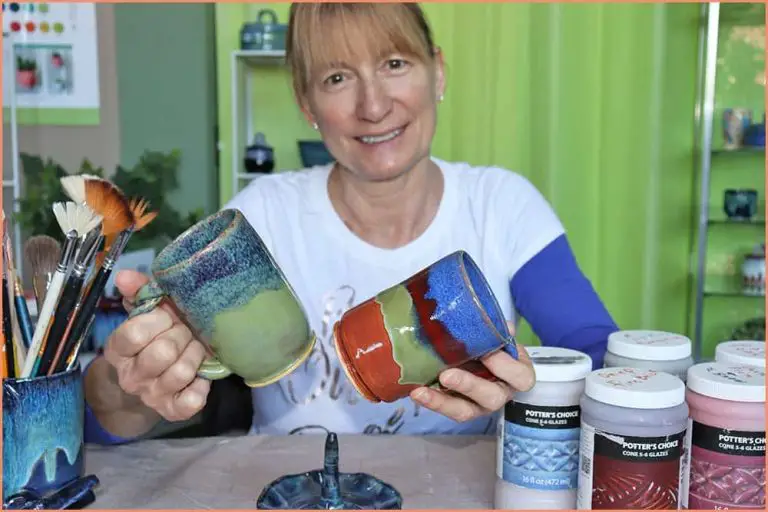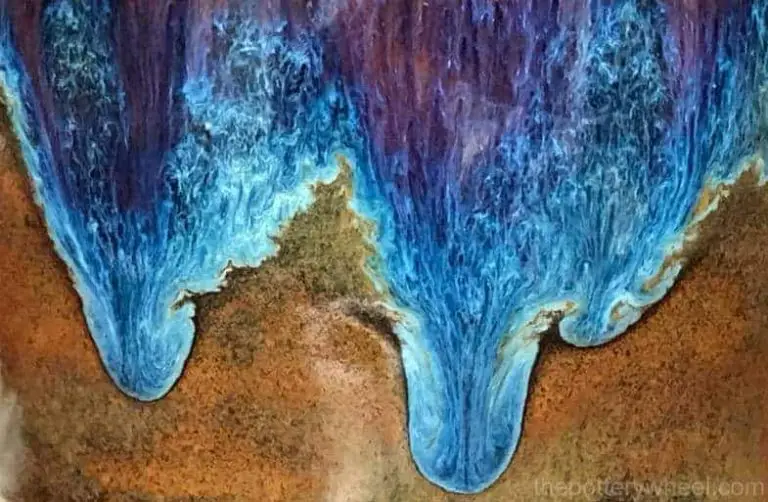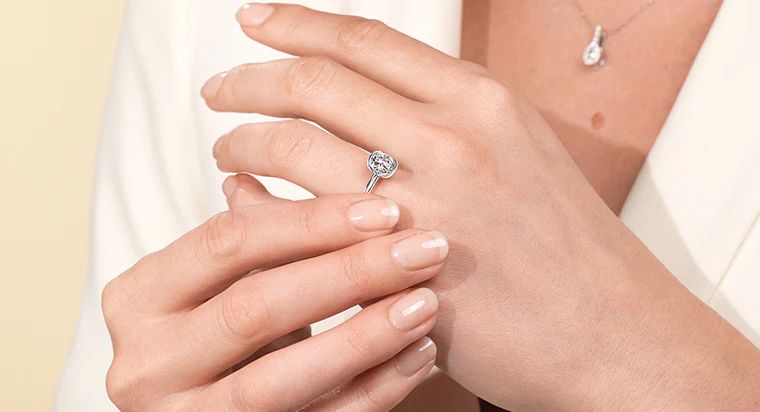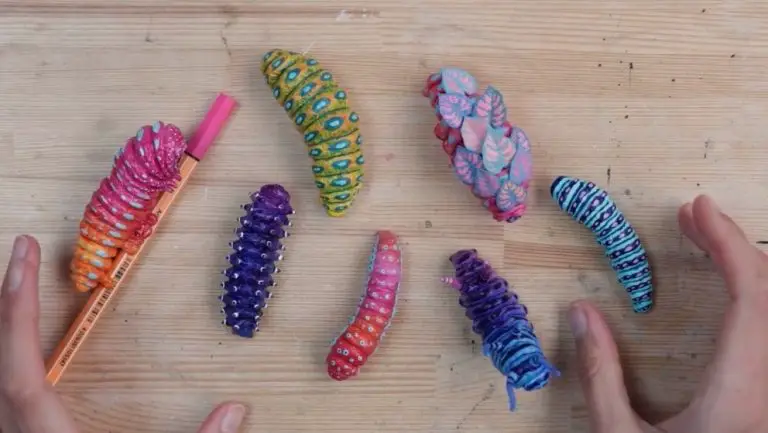What Paint Color Is Clay?
Defining Clay
Clay is a type of fine-grained soil that is plastic when wet but hard when fired. Clay is comprised of very small mineral particles , typically less than 0.002 mm in diameter. The mineral particles are layered sheets of silicates (alumina and silica), held together by electromagnetic forces. Clay develops plasticity when wet because water pushes the mineral sheets apart, allowing them to slide over one another. This plasticity enables clay to be molded into different shapes which are then maintained as the clay dries and hardens. When fired in a kiln at high temperatures, clay undergoes irreversible chemical and physical changes, becoming hard, durable materials like brick and pottery. This is due to the minerals melting or fusing together during firing. While there are many different types of clay, they all share these fundamental properties of plasticity, hardening, and strenghtening when fired at high temperatures.
Sources:
https://www.merriam-webster.com/dictionary/clay%20soil
Types of Clay
There are many different types of clay used for pottery and ceramics. Clay is a natural material that is formed from the decomposition and weathering of rocks like granite and feldspar over millions of years. The main types of clay used by potters include:
Kaolin – Also known as china clay, this very pure white firing clay is essential for making porcelain. It fires to a very white color and is valued for its workability.
Bentonite – This extremely plastic clay swells when wet and shrinks as it dries. It is very sticky and flexible. Bentonite is commonly used for sculpting.
Ball clay – A very plastic secondary clay that helps improve workability and plasticity of clay bodies. It fires to a light cream or tan color.
Fire clay – A refractory clay that can withstand very high temperatures and has a high level of resistance to thermal shock. It is essential for insulating kilns.
Earthenware clay – The most common type of clay used for pottery. It fires at lower temperatures and retains its natural earthy colors like brown, red, and orange.
Stoneware clay – A strong clay that becomes vitrified and watertight at higher firing temperatures around 2200°F. It can be utilized to make functional pottery.
Porcelain clay – A very refined white clay containing kaolin that becomes translucent when fired at extremely high temperatures over 2300°F. Porcelain is known for its bright white color and delicate, glass-like quality.
Clay Color Basics
Natural clay can range in color from white to black based on its mineral composition. The color of clay depends on the types and amounts of minerals present. Some common minerals that influence clay color include:
- Iron oxides – Add red, yellow, or brown colors
- Calcium carbonates – Add white or light colors
- Organic matter – Darkens clay to gray or black
- Sodium, potassium, magnesium – Modify to pink or orange tones
The amount of iron oxide is a primary factor determining clay color. More iron leads to richer red and brown tones. Firing and processing clay affects the final color. A raw gray clay can turn red when fired as the iron oxidizes. The source, mineral content, and processing give clay a wide palette of possible shades.
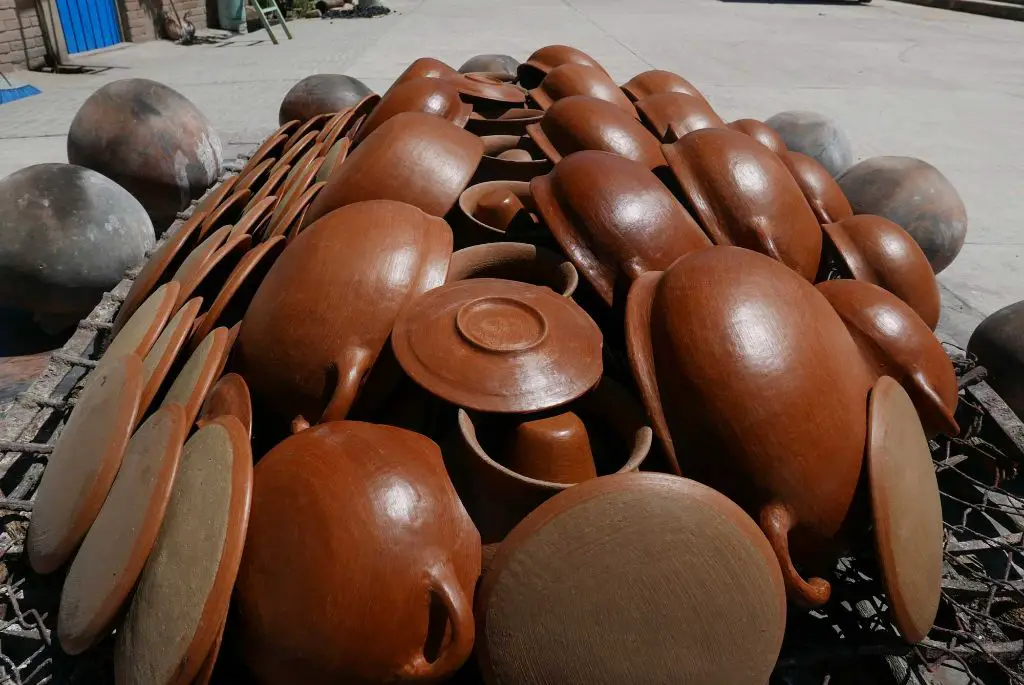
Firing Process
The firing process is a key step that affects the final color of clay. Firing refers to heating the clay to high temperatures in a kiln. The temperature typically reaches between 1,200-2,400°F, which causes chemical and physical changes in the clay body. At these high heat levels, the clay vitrifies and becomes harder as the materials and minerals fuse together.
The most significant transformation during firing is that the iron oxide in clay changes color according to the amount of oxygen able to reach it. At lower temperatures in an oxidizing atmosphere, the iron oxide turns red, resulting in terra cotta red clay. At higher temperatures in a neutral atmosphere, the iron oxide turns brown, creating brown clay. In a reducing atmosphere with limited oxygen, the iron oxide turns gray or black, causing darker gray/black clay. The temperature and kiln atmosphere are controlled during the firing schedule to achieve the desired clay color.
In addition to affecting color, firing clay at high temperatures also burns out any organic matter, hardens it into ceramic material, and sets any glazes or slips applied to the clay body. The firing process is essential for transforming soft clay into a functional and permanent final product. Source
Red Clay
Red clay gets its color from iron oxide content. Iron oxide is what gives clay its red hue, as explained on Reddit: “Iron oxide is what makes clay red. Red clay by definition has iron oxide in it.” (Source). The firing process brings out the red color even more by oxidizing the iron oxide.
The higher the iron oxide content, the redder the clay will become when fired. As the clay is heated to high temperatures, the iron oxide undergoes a chemical reaction and turns a deep, vibrant red. This is why red clay pottery and tiles get their iconic rich red color.
White Clay
White clay has low iron and high kaolinite content. Kaolinite is a clay mineral that formed from the weathering of granite and feldspar. It is one of the most common clay minerals and makes up a large part of kaolin. The lack of iron oxides allows white clay to maintain its light color when fired at high temperatures. In comparison, red and brown clays contain higher levels of iron that cause them to turn red or brown when fired.1
Some examples of white firing clays include kaolin, ball clay, and fireclay. These clays are valued for their whiteness, workability, and high firing range. White clay is commonly used for pottery, porcelain, and ceramic art. It can also be mixed with colored clays or stains to create lighter tinted hues.
When working with white clay, it’s important to keep the surface clean to maintain its bright white appearance. Any dirt or dust that gets into the clay can cause discoloration. Storing unused white clay in a sealed container helps prevent contaminants from altering its pure white color.
Gray Clay
Gray clay has moderate iron content. This clay fires to a grayish hue that can range from light to dark grays. The iron content causes the clay to turn gray when fired, transitioning from its natural earthen shades. The exact gray color depends on factors like the clay composition, firing temperature, and length of firing time.[1]
Gray clay is commonly used in pottery and ceramic pieces. The neutral gray tones allow gray clay to complement a variety of decorative styles and glazing colors. Many artisans appreciate the muted, subtle nature of finished gray clay pieces. Gray clay can also be used as a base and painted over after firing.[2]
Brown Clay
Brown clay gets its color from the presence of iron oxides and organic matter in the clay body. When brown clay is fired, it retains its brownish hue. The iron oxides undergo a chemical change during firing, resulting in various shades of brown. The organic matter burns out in the kiln, but leaves behind a brownish tint.
According to the video “How To Make Brown Clay – Color Mixing Video” by HsinChuen Lin on YouTube, you can mix other natural clays together to achieve a brown clay body for handbuilding or throwing on the potter’s wheel. For example, mixing a red clay with white clay results in a brownish clay. Alternatively, adding a touch of black to an orange clay produces a rich brown.
The specific shade of brown depends on the mineral composition of the clay and the atmosphere and temperature of the kiln firing. Brown clays range from light tans to deep coffee colors. When fired in an electric kiln, brown clays tend to retain their original color. Firing in a wood kiln or raku kiln can produce darker brown clays with smokier tones.
Green Clay
Green clay gets its color from having iron along with decomposing plant matter in its mineral makeup. The iron oxide reacts and brings out the green tones when the clay is fired in a kiln. The more plant matter and iron oxide present, the greener the clay will become when fired.https://potsbyandrea.shop/products/pea-green-colored-clay
The intensity of the green depends on the mineral makeup of the clay body and the firing temperature. Lower firing temperatures like earthenware bring out more green, while higher temperatures like stoneware will yield more earthy green-browns. Clays with higher iron oxide content will also fire greener.
Green clays are popular choices for natural, organic looks in pottery and ceramic art. The green tones complement flower and plant designs nicely. Artists also blend green clay with other natural clay colors like brown for an earthy look.
Using Colored Clay
Colored clay is commonly used in a variety of pottery, sculpture, and tile applications where aesthetics and design are important. The color of the clay affects the overall look and feel of the finished piece.
For example, a potter may choose a bright red clay to make a vivid garden pot, or opt for a neutral beige clay for a more subdued look. Sculptors often blend and layer multiple colors of clay to create visual interest and texture in their 3D works. Tiles and mosaics also frequently incorporate a mix of colored clays to form intricate patterns and murals.
The coloring in clay comes from mineral pigments like iron oxide that are naturally found in the clay deposits. Potters can also mix in stains, oxides, or other compounds to achieve desired hues and tones. The final color is influenced by factors like the clay composition, firing temperature, and firing atmosphere.
When working with colored clay, artists and artisans must consider how the color will be transformed through drying, firing, and glazing stages. Vibrant colors can mute or change completely in the kiln. So a deep understanding of clay chemistry and firing methods is important for consistency.
Overall, the use of colored clays allows for tremendous creativity and artistry. Whether aiming for a punch of color or a more earthy look, clay artists have a palette of natural clays in various colors to work with when crafting their pieces.

